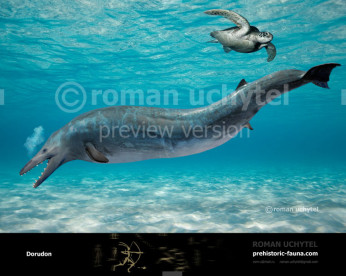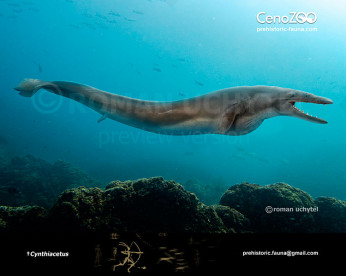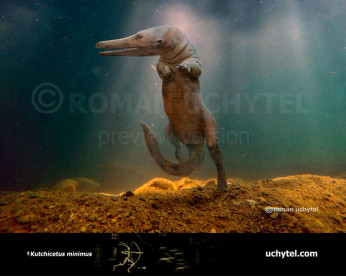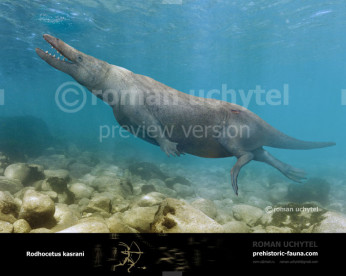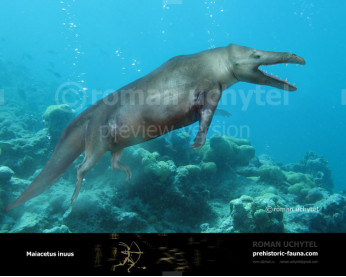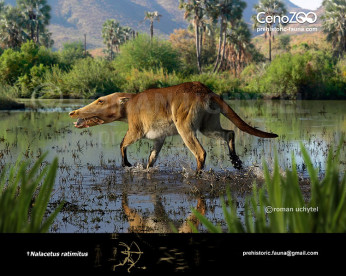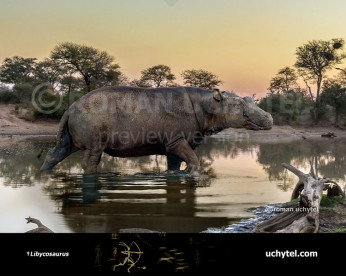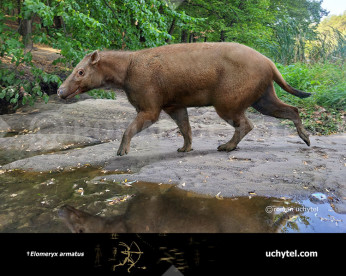Ichthyolestes
29252925
Ichthyolestes (†Ichthyolestes (Dehm & Oettingen-Spielberg 1958))
Order: Artiodactyla
Infraorder:Cetacea
Parvorder:†Archaeoceti
Family:†Pakicetidae
Temporal range: during the Eocene of Pakistan
Dimensions: length - 1,5 m, weight - 15 - 40 kg
Ichthyolestes is an extinct genus of archaic cetacean that was endemic to Indo-Pakistan.
Like other members of the family Pakicetidae, which are considered the earliest and least specialized of the archaic cetaceans, Ichthyolestes represents an early quadrupedal phase of the land-to-sea transition which occurs in the cetacean lineage.
Ichthyolestes is the smallest Pakicetid, approximately 30% smaller than Pakicetus. They retain many features typical of terrestrial Eocene artiodactyls, including long and gracile limb bones, a fused sacrum, small mandibular foramen, and no cranial telescoping. The body plan of Ichthyolestes is generally similar to Pakicetus, but smaller and more gracile.
Fossil findings indicate Ichthyolestes shared habitat with its relatives Pakicetus and Nalacetus. Their fossils are usually found around river channel deposits, not marine deposits or fauna. Ichthyolestes, therefore, had an affinity for water and were either terrestrial or semi-aquatic.[4] The fluvial facies of the lower Kuldana Formation represent shallow tropical riverine complexes and were likely habitats for the initial stages of transition into water.
Оплата
У Вас є кілька зручних способів купівлі зображення: кредитна чи дебетова картка Visa, Mastercard, Maestro; PayPal або банківський переказ
Ichthyolestes (†Ichthyolestes (Dehm & Oettingen-Spielberg 1958))
Order: Artiodactyla
Infraorder:Cetacea
Parvorder:†Archaeoceti
Family:†Pakicetidae
Temporal range: during the Eocene of Pakistan
Dimensions: length - 1,5 m, weight - 15 - 40 kg
Ichthyolestes is an extinct genus of archaic cetacean that was endemic to Indo-Pakistan.
Like other members of the family Pakicetidae, which are considered the earliest and least specialized of the archaic cetaceans, Ichthyolestes represents an early quadrupedal phase of the land-to-sea transition which occurs in the cetacean lineage.
Ichthyolestes is the smallest Pakicetid, approximately 30% smaller than Pakicetus. They retain many features typical of terrestrial Eocene artiodactyls, including long and gracile limb bones, a fused sacrum, small mandibular foramen, and no cranial telescoping. The body plan of Ichthyolestes is generally similar to Pakicetus, but smaller and more gracile.
Fossil findings indicate Ichthyolestes shared habitat with its relatives Pakicetus and Nalacetus. Their fossils are usually found around river channel deposits, not marine deposits or fauna. Ichthyolestes, therefore, had an affinity for water and were either terrestrial or semi-aquatic.[4] The fluvial facies of the lower Kuldana Formation represent shallow tropical riverine complexes and were likely habitats for the initial stages of transition into water.

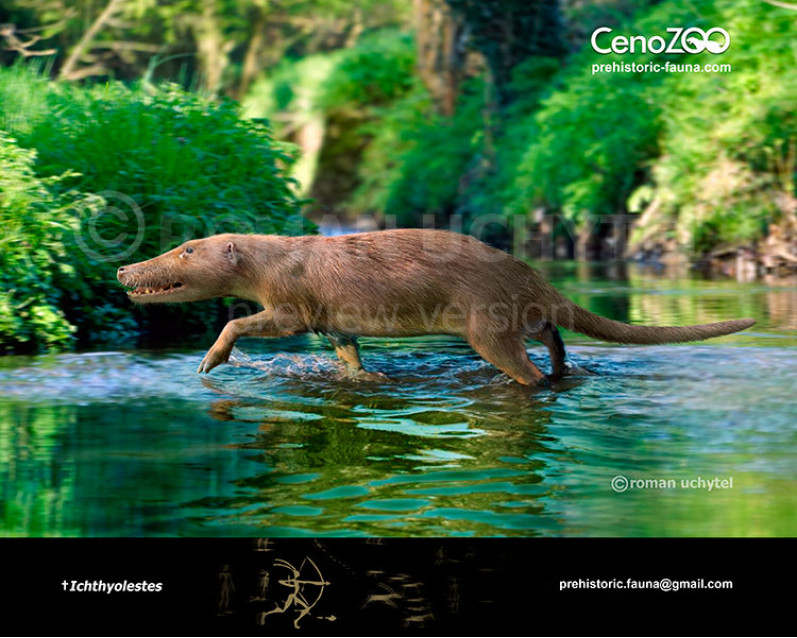
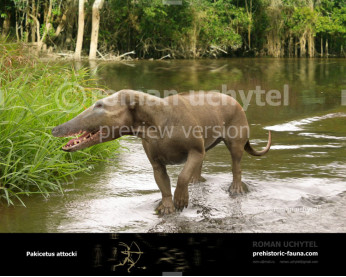
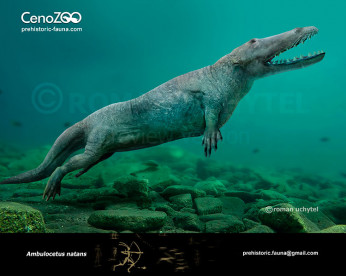
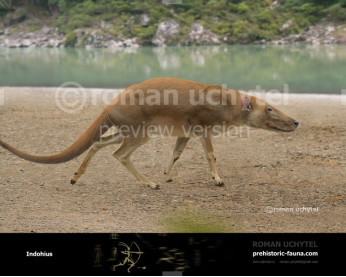
-346x277.jpg)
